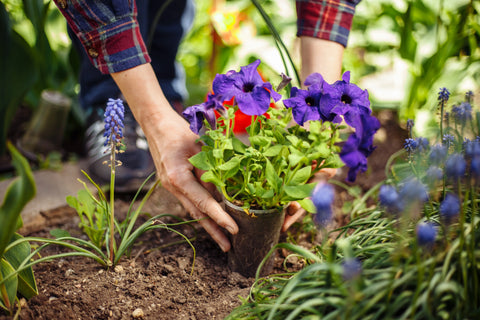Care Guide Monstera Deliciosa
GENERAL CARE, MY NEW PLANT ARRIVED - Thank you for trusting Eureka Farms with your recent purchase, our main objective is to ensure a great customer experience and deliver great quality plants for your enjoyment. Plants shipped online are in complete darkness for several days, is normal for plants to stress during this process, do not repot for 4 weeks, we recommend dropping the plant in its existing pot as is in a deco planter of your choice, allow your new arrival to gradually climatize to their new environment, humidity levels, lighting and temperatures.
WATER MANAGEMENT FOR PHILODENDRON MONSTERA DELICIOSA -
Water Recommendations base on pot size, we suggest to utilize a soil probe initially to determine humidity levels and when to water.
6 inch Pot plants, every 4-7 Days, 10-12 inch Pot plants, every 7-12 days
LIGHTING INSTRUCTIONS - Philodendron Monstera Deliciosa is considered the queen of the indoor plant world, they can perform well both indoors or outdoors. Philodendron Monstera Deliciosa can adapt to low light conditions much better than many other varieties of indoor foliage. You may place this specimen virtually any where in the home provided there is a window near by, complete darkness is not recommended, no light means the plant can not photosynthesize and it will affect the health of the plant. If bright indirect light is available then this is the best option for the Monstera Deliciosa so it can remain vibrant for may years to come.
HUMIDITY - Philodendrons originate from the tropics, where humidity is very high, generally the air in our homes is dry, occasionally misting our houseplants is a very simple and effective way to boost humidity, an easy solution to the risk of overwatering your plants. Philodendrons in general enjoy higher humidity levels, Always pay attention to the color and texture of the leaves on your plant. Generally Plants with brown or dry leaf tips will benefit from regular misting to keep the plant happy and thriving, preferably in the mornings to allow the foliage to completely dry out during the day.
PLACEMENT AND TEMPERATURE - Selecting the right location for your plant indoors or outdoors is very important, micro climates can affect the health of the plant, make sure the plant does not receive air draft from near by AC/Heating vents, or warm air if close to a freezer, the foliage will dehydrate faster than it can hydrate from moisture in the air or in the soil, eventually turning brown and dropping, when plants are properly watered and care for and still display signs of wilting or seem sad it may help to relocate the plant to a different area for brighter indirect light. Please note most tropical plants are from the tropics, proper moisture is required for their health and survival, we highly recommend to bring your tropical plants indoors when temperatures are expected below 45s during winter months or above 90 during summer months, extreme weather can severely damage the plant.
REPOTTING - Philodendrons can grow exceptionally well in pots for long periods of time, frequent repotting isn’t as necessary compared to other plants. Generally you should repot your plant when it has become excessively rootbound that its roots are overgrown, you may not need to repot for 2-3 years, do maintain a feeding schedule, the longer is kept in its existing pot the more nutrients are needed to maintain the plant happy and healthy.
FERTILIZING – No need to fertilize right away, We fertilize our plants during the production phase with slow release fertilizer which can last an additional 2-3 months supplying residual nutrients to the plant. Once you do decide to fertilize You may use a fertilizer formulated for interior plants, preferably a slow release fertilizer 180 days duration, fertilize during spring or fall base on label instructions.
INSECTS OR DESEASES - Here’s another plus, Monstera plants are not regularly affected by pests. in the event that scale, mealy bugs, or mites are found to affect the plant, they can be controlled by wiping the infested area with a soapy solution, add a few drops of dish soap in a cup of water and wipe off the affected areas with a soft cloth, It can take several intermittent cleanings to rid the plant of the pests.
Horticultural oils can be sprayed directly onto the insects, A second and third treatment, if using oils, will be necessary. Space out the sprays at 3 week intervals to break up the mealybug life cycle. Both of these treatments together will be very effective.


